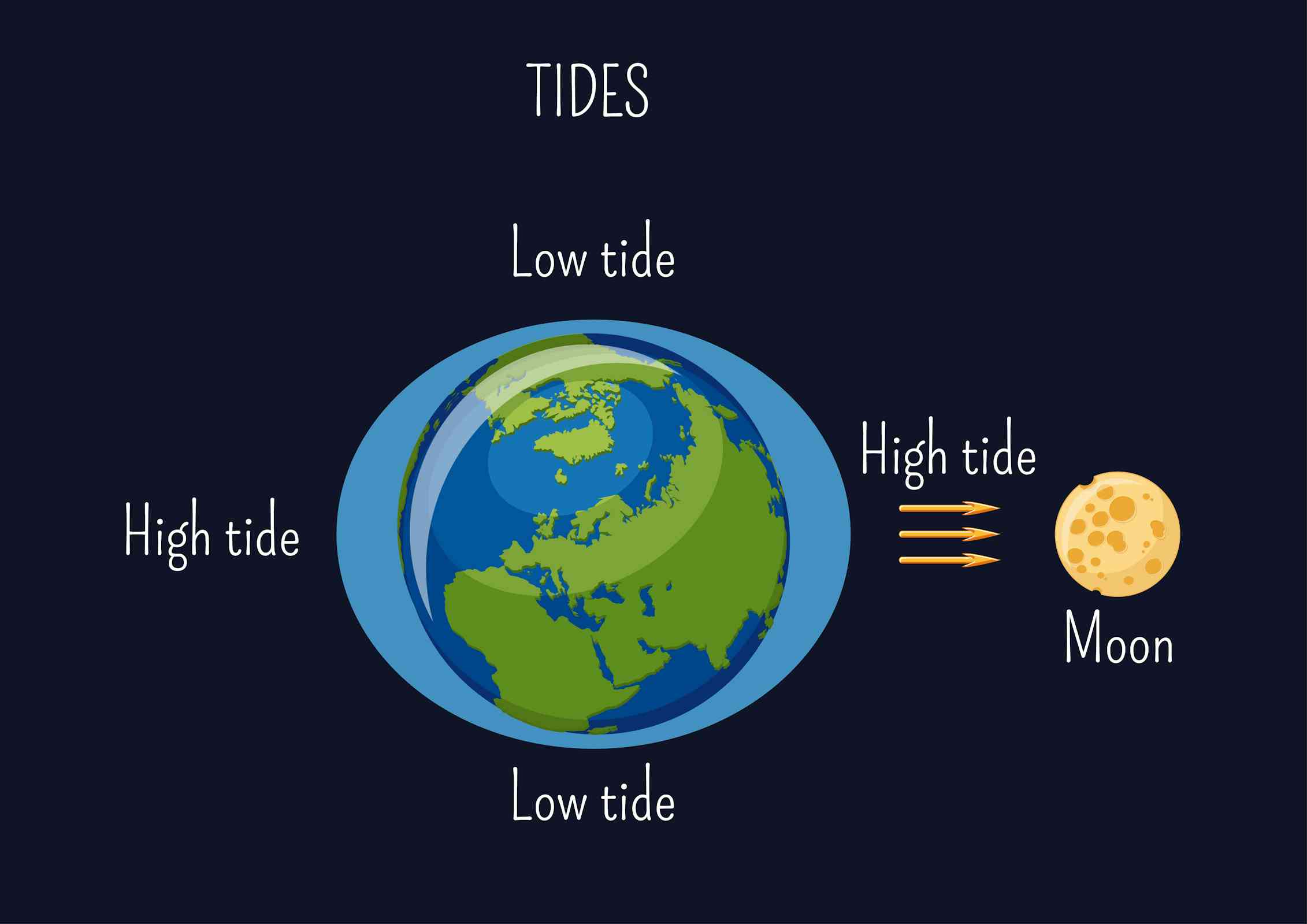The moon is the reason why we have tides and waves on earth along with the sun it moves billions of tones of water each day

The Moon, Tides, and Waves on Earth

The moon, our closest celestial neighbor, is not only a beautiful sight in the night sky but also plays a crucial role in shaping our planet and its oceans. Many of us are familiar with the rhythmic rise and fall of tides, as well as the crashing of waves along the shoreline. Have you ever wondered what causes these phenomena? It turns out that the moon and the sun are key players in this aquatic dance.
The Moon’s Gravitational Pull

The moon’s gravitational pull is the primary force behind the creation of tides and waves on Earth. As the moon orbits our planet, its gravitational force affects the Earth’s ocean water. Since water is a fluid and can move with relative ease, this gravitational interaction results in the formation of tides.
The moon’s gravitational pull creates two high tides and two low tides every day. When the moon is directly overhead or on the opposite side of the Earth, the gravitational force is the strongest, causing the water to bulge outward, creating high tides in those regions. At the same time, areas perpendicular to these bulges experience low tides. As the Earth rotates, different parts of the planet experience these tidal changes.
The Sun’s Influence
Although the moon has a significant impact, the sun’s gravitational force also contributes to the tides we observe. However, due to its greater distance from Earth, the sun’s gravitational pull is only about half as strong as the moon’s pull. Hence, the moon’s influence is approximately twice as powerful in generating tides.
During new and full moon phases, when the Earth, moon, and sun are roughly aligned, their combined gravitational pull results in higher high tides called spring tides. Conversely, during the moon’s first and third quarter phases, when the gravitational forces of the sun and moon counteract each other, we experience lower high tides known as neap tides.
Waves in Conjunction with Tides
While tides are mainly a result of the gravitational pull, waves are produced by the transfer of energy through water. Winds blowing across the surface of the oceans generate waves, which then move across immense distances until they eventually reach the shoreline.
The presence of tides affects the characteristics of waves. Tidal changes can amplify or dampen wave energy, resulting in varying wave heights at different times of the day. For surfers and ocean enthusiasts, understanding the interplay between tides and waves is crucial for predicting optimal conditions for their activities.
In conclusion, the moon, together with the sun, orchestrates the mesmerizing symphony of tides and waves on our planet. Its gravitational pull, which is far-reaching yet gentle, moves billions of tons of water daily, creating the ebb and flow we witness along coastlines worldwide. So the next time you find yourself at the beach, tracing paths in the sand as waves gently crash ashore, take a moment to appreciate the moon’s role in this natural spectacle.
Sources:
Related Posts
Quick Links
Legal Stuff

